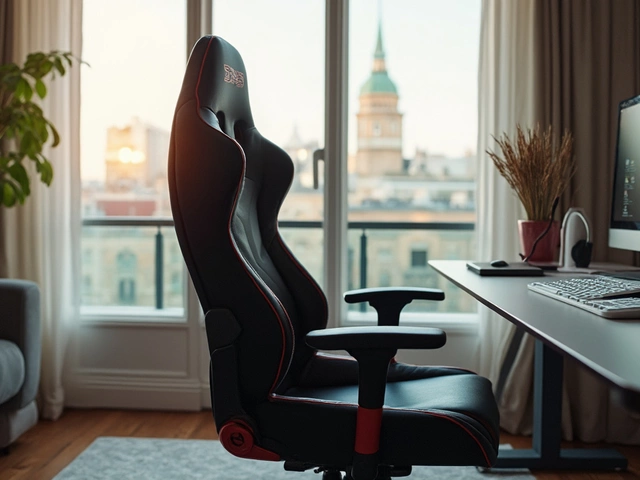 21
Nov,2024
21
Nov,2024
Deciding on the ideal color for your bookshelf is more than just an aesthetic endeavor; it's an opportunity to express your personality and complement the ambiance of your home. Bookshelves are not only practical pieces for storage but also blank canvases waiting to add charm and soul to any room.
Before you dive into selecting colors, it's crucial to consider the essence of the space your bookshelf will inhabit. Will it serve as a cozy reading nook, a vibrant office space, or perhaps a tranquil bedroom retreat? The purpose of the room plays a significant role in guiding your color choice.
Color has the extraordinary ability to influence mood and perception. Neutrals like white and beige offer a versatile backdrop and promote a clean, modern feel. If you're looking for something daring, vibrant colors can make a striking statement and inject energy into a space. On the other hand, a classic wood finish might provide warmth and sophistication, seamlessly blending with a more traditional decor.
- Understanding Your Space
- The Impact of Color Choices
- Popular Bookshelf Color Options
- Tips for Harmonizing Colors with Room Decor
Understanding Your Space
When diving into the task of selecting the perfect color for your bookshelf, it's vital to embark on a journey of observing the essence and purpose of the room you're planning to enhance. Every room in a home tells its own story, and your choice should seamlessly blend with the existing narrative. Begin by considering the primary function of the space. Is it a serene sanctuary for unwinding after a hectic day, such as a bedroom, or does it pulsate with the energy of creative thoughts, as a home office might? The purpose of the space acts as a guiding star in your decision-making process.
Another crucial aspect is understanding the lighting dynamics of the area. Natural light can dramatically alter the appearance of a color throughout the day, giving it a warmer or cooler undertone depending on the time. Rooms that bask in abundant sunlight might accommodate deeper or bolder hues without overwhelming the senses, while spaces that rely on artificial lighting might benefit from lighter and brighter shades to prevent them from feeling cramped or dim. As noted by famed interior designer Nate Berkus, "Your home should tell the story of who you are and be a collection of what you love brought together under one roof." This philosophy underscores the importance of personal context in decisions.
It’s also important to assess the existing color palette within the room. Look around and take note of the dominant colors present on walls, furniture, and even in the textures of rugs and cushions. A cohesive look is achieved when all these elements harmonize rather than clash, guiding the eye seamlessly around the room. A well-chosen bookshelf color can act as the perfect bridge, bringing together these various elements into a unified aesthetic. Anecdotally, when working with smaller spaces, designers often recommend lighter, more muted colors to create an illusion of spaciousness. Consider using these hues in tight spaces where you want the illusion of expanded boundaries.
For those with eclectic sensibilities, contrasting shades can be employed artistically to create focal points, where the bookshelf emerges as a standalone feature worthy of admiration. Yet, it's often the subtle choices that transform an entire room. When harmonizing with existing style elements, like moldings or woodwork, a cognizant match or warm contrast can frame this piece as a designed event rather than a mere utility. By immersing yourself deeply in understanding your space, choosing the color becomes not just a visual decision but a meaningful part of crafting an environment that feels authentically your own.

The Impact of Color Choices
Embarking on the journey of selecting the right bookshelf color involves far more than superficial decoration. It is a nuanced decision that can affect the entire feel of your home. Color psychology tells us that hues can evoke emotions, alter perceptions of space, and even enhance productivity or relaxation. When considering color for a bookshelf, it's essential to understand the interplay of colors in your room. For instance, light colors tend to make a space feel larger and airier. A bookshelf in white or soft pastel might be ideal for small rooms, infusing them with light and openness while maintaining simplicity.
Contrastingly, dark colors like navy or charcoal can introduce an element of drama and sophistication, often creating a point of focus in a room. Such colors can ground a space, providing a backdrop that allows the contents of a bookcase to truly shine. Brighter colors, like red or yellow, are undeniably energetic and can invigorate a space, making them perfect for areas where dynamism and creativity are welcomed, such as a home office or a child's playroom. There is an inherent risk, however, that overly bold colors can dominate, sometimes clashing with classic decor or overwhelming a small room.
The Role of Natural Light
Lighting plays a pivotal role when assessing color impact. Natural light can dramatically alter how colors appear. In spaces drenched in sunlight, colors often appear more vivid, while in dimly lit rooms, colors may require enhancement from artificial light sources. A room’s orientation to sunlight— northern, southern, eastern, or western exposure— can mean that colors shift in hue throughout the day. For example, a bookshelf in an east-facing room may appear cool in the morning and warm by afternoon. Taking these factors into account can help in selecting a color that truly harmonizes with the natural light available.
"The best color in the whole world is the one that looks good on you." — Coco Chanel
This famous quote often applies as well to home decor as it does to fashion, urging people to consider how colors interact with personal style and environment. Personal preference remains key; while trends fluctuate, your taste and comfort should remain at the forefront of the decision-making process.
Practical Considerations
Besides aesthetics, practical elements should also be part of your color decision. Think about what you will store on the bookshelf and how color may accentuate or detract from these items. For example, neutral-colored bookcases provide a timeless backdrop for colorful books and decor items to stand out without overwhelming the senses. Conversely, a richly hued bookshelf can complement monochrome or neutral decorations, showcasing them as deliberate art installations rather than mere storage solutions. Deciding on a color scheme should involve a holistic view of your space, including furniture, wall colors, and personal touches, to ensure the chosen hue integrates seamlessly.

Popular Bookshelf Color Options
With an array of color choices at your fingertips, selecting the perfect hue for your bookshelf can feel both exciting and daunting. Color not only influences aesthetics but also resonates with the functionality of the space. A popular choice that never goes out of style is stark white, which offers a clean and airy feel. This color option is particularly appealing for small rooms, as it reflects light and creates the illusion of a larger space. White bookshelves serve as a versatile canvas that allows books and decorative items to become the star of the show rather than fading into the background.
Moving from the serene simplicity of white, beige and light earthy tones are also in vogue. These colors lend a sense of warmth while maintaining a neutral palette that can easily adapt to various decor styles. An intriguing fact from interior design experts reveals that these natural hues often evoke calm and relaxation, making them a preferred choice for spaces where comfort is key. Choosing these colors can simultaneously provide aesthetic value while maintaining a peaceful ambiance in the room.
If you're one to embrace boldness, opting for a rich navy or deep emerald bookshelf can making a striking statement. These colors have the unique ability to add depth and sophistication, often becoming the focal point of a room. According to a quote from Elle Decoration, "Bold colors on bookshelves can create a sense of drama, turning a functional piece of furniture into a conversation starter." However, it's crucial to balance such colors with the rest of your decor to avoid overwhelming the room.
Another timeless choice is natural wood finish, beloved for its durability and warmth. This traditional option is perfect for those seeking a classic look that never grows outdated. The varying grains and textures of wood can add a layer of visual interest, casting light in subtle yet mesmerizing ways that paint sometimes falls short of achieving. Interestingly, historical data on interior design trends shows that wooden bookcases have been favored since the Victorian era, a testament to their enduring charm and adaptability.
Lastly, black offers a contemporary edge, perfect for modern and minimalist aesthetics. While it can appear bold and dramatic, black is surprisingly versatile and can blend seamlessly into a room, even accentuating brighter colors in nearby decor. Based on an interesting fact shared by colour theory experts, black, in moderation, can promote concentration and focus, making it a potential choice for a home office or study area.
Keeping in mind these popular color options, the key lies in aligning the aesthetic qualities of your bookcase with your personal taste and the intended atmosphere of the room. Whether you crave the serenity of neutrals or the striking allure of bold hues, your shelf’s color should feel like an extension of your personality and lifestyle.

Tips for Harmonizing Colors with Room Decor
When it comes to seamlessly integrating a bookshelf color with your existing room decor, the key lies in understanding and manipulating the interplay of colors. As an anchor piece, a bookshelf can either blend into its surroundings or stand out as a focal point. To achieve a harmonious look, begin by analyzing the color palette of your room. What are the dominant shades on your walls, floors, and larger pieces of furniture? Do you lean towards cool tones or warm hues? Identifying the prevailing colors can help in selecting a bookshelf color that complements or contrasts effectively, creating either cohesion or dynamic interest.
Another factor to consider is the feelings each color evokes. Cool colors like blues and greens have a calming effect and work well in spaces meant for relaxation, such as bedrooms or reading nooks. In contrast, warm colors like reds and oranges can inject energy and vibrancy, suitable for more active spaces like the living room or home office. If your room is already full of vivid hues, a bookshelf in a neutral shade such as beige or gray may provide a balancing backdrop for your diverse decor.
Lighting also plays a vital role in your decision-making process. Natural and artificial light can dramatically alter how colors appear. Beige that looks warm and inviting in daylight might become yellowish under incandescent light. Consider testing sample swatches in different light conditions before settling on a final choice. “Light can both enhance and detract from the color presentation,” says renowned interior designer Jane Lockwood.
She emphasizes, "Always look at your chosen sample in the space where it will live, throughout different times of day."
Beyond color, the finish of your bookshelf can affect its integration into the room. A matte finish lends a contemporary feel, often merging harmoniously with modern design schemes. Glossy finishes might draw attention, making your bookshelf a central decorative element. Wood grain and textures add another layer to consider, particularly if your space already includes wooden elements. Matching or intentionally contrasting wood tones can reinforce or diversify your room's aesthetic narrative.
Finally, don't hesitate to include personal touches that tie the bookshelf to your decor. Accessories such as vases, decorative items, or strategically placed plants can reaffirm the color choices elsewhere in your decor. By balancing these elements, your bookshelf will either blend subtly with your environment or stand out, depending on your intent and the narrative you wish to create within your home.




